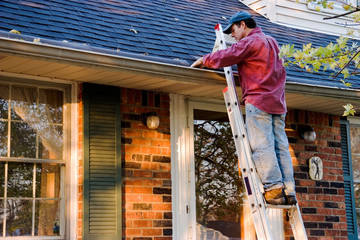A home’s gutter system protects the roof, siding, and foundation from water damage. But it can become clogged with dirt, animal feces, leaves, and sticks, which prevents rainwater from flowing smoothly. If left unchecked, a clogged gutter can lead to costly repairs and water damage to your home. Gutter Cleaning MT Pleasant SC can inspect your gutters from the ground and remove any debris preventing the downspout from funneling rainwater efficiently.

Clogged gutters can be a haven for pests. Mosquitoes, ants, termites, and other insects love the moist environment in gutters as well as a constant source of water. Moreover, debris like leaves and twigs can also create a nest that attracts bugs. These include hornets, bees and wasps. These pests can cause serious damage to your home, causing roof leaks and siding damage. They can also carry diseases and contaminate food. Rats can enter your home through a clogged downspout or through overhanging trees that are not properly maintained. They can eat your gutters, chewing through free brackets and bolts that secure them in place.
Clogged gutters are a major cause of water damage to your home. The blockage forces rainwater and snowmelt to spill over the sides of the gutter, down the siding and pool around your foundation. This water will then rot the wood fascia and other parts of your siding and wood framing, causing them to weaken and deteriorate. This is a big deal for homeowners since the rotting wood is irresistible to insects such as termites, which will eat it away and cause structural damage.
If this happens to your home, it’s best to contact a foundation repair expert to prevent future problems with the structure. In addition to rotting siding and wood framing, clogged gutters can lead to mold issues as well. This is because mould can thrive when it’s left to grow in wet conditions.
Gutters should be cleared of debris in order to prevent water damage. Clogged gutters increase the likelihood of roof leaks. A common cause of leaks is damaged flashing. Flashing is a thin layer of protective material that’s installed around joints, crevices, and vertical surfaces to prevent water from entering your home.
It’s also commonly used to seal vent boots that connect roof pipes to plumbing fixtures. If the flashing becomes cracked, rotted or broken, water can seep through and damage the base of the vent boot, causing a leak.
If you’re not sure where the leak is coming from, perform a water test. Ask a friend to spray water onto your roof and then look for where the water comes through.
This will help you pinpoint the location of the leak. It can take time, but it’s worth the effort. It’ll save you a lot of money in the long run by preventing further water damage.
Gutter cleaning is an important home maintenance task that should be completed at least twice a year. Clogged gutters allow rainwater to pool on the roof and in surrounding areas, which leads to serious water damage to your property.
A clogged gutter also allows water to seep under your roof and into your basement, fueling mold growth and mildew. This can cause severe structural damage to your home.
The best way to keep yourself safe during gutter cleaning is to follow safety measures.
Wearing gloves can help prevent painful cuts caused by dirty, rotting leaf debris that can contain bird, pigeon and squirrel feces that are covered with bacteria. Protective eye gear can also help ward off falls from falling leaves and other debris. Use a ladder with wide steps and shelves that can improve your balance while you clean your gutters. A sturdy ladder should be inspected for loose parts (notably screws and bolts) before use.
When is the best time to clean your gutters? It can range from two to three times a year, depending on how much rainfall falls near your home. Spring and fall are the best times to clean your gutters, since standing water is one of the biggest causes of clogged gutters. If left unchecked, standing water can damage your home, as well as cause leaks and algae growth. Luckily, you can hire a professional company to handle your gutter cleaning for you!

